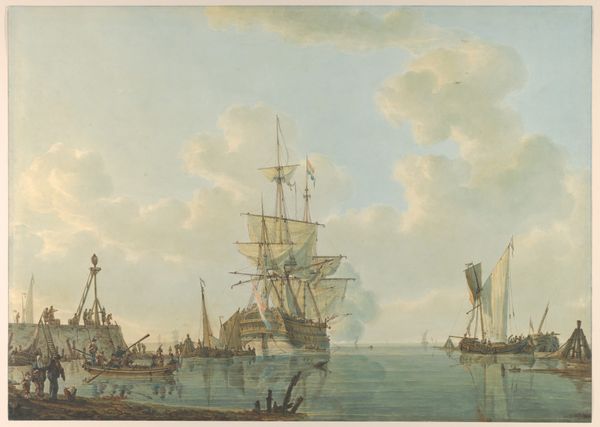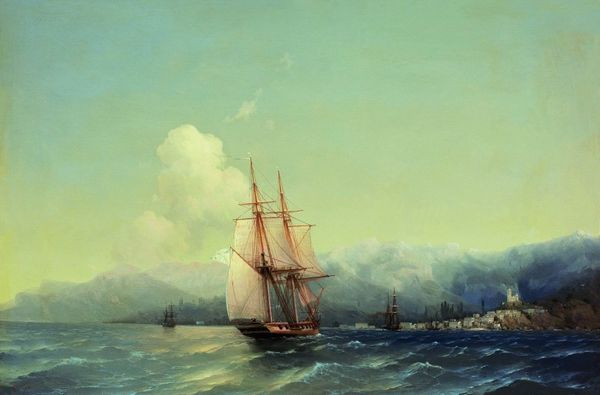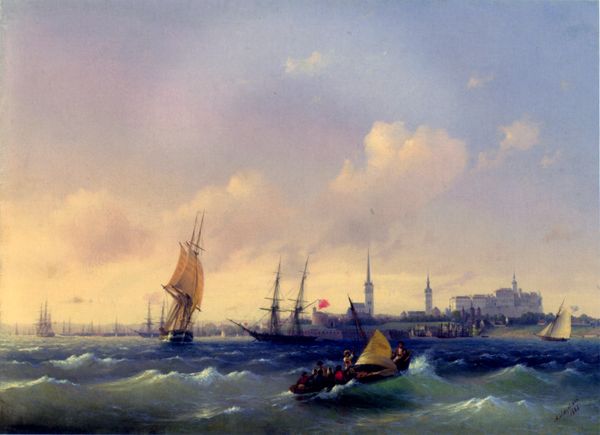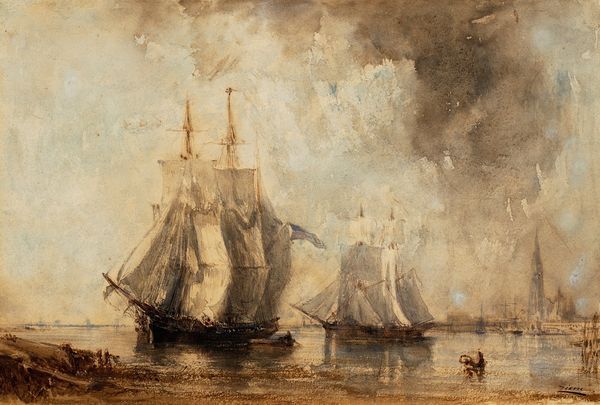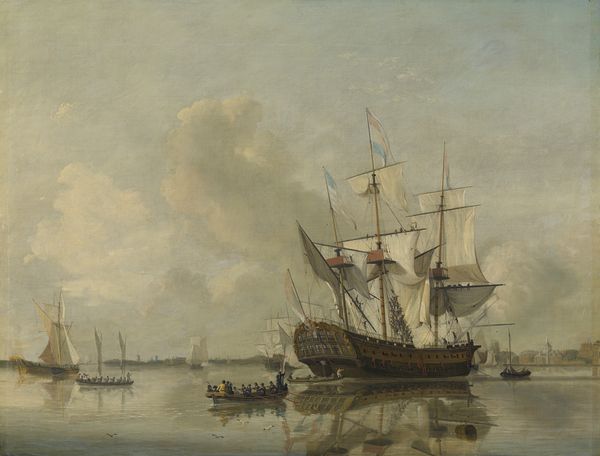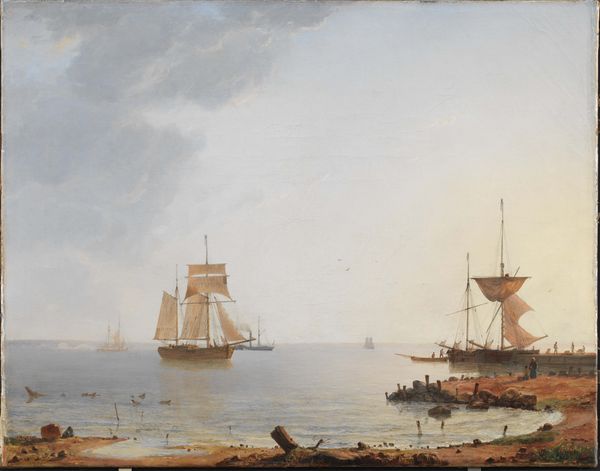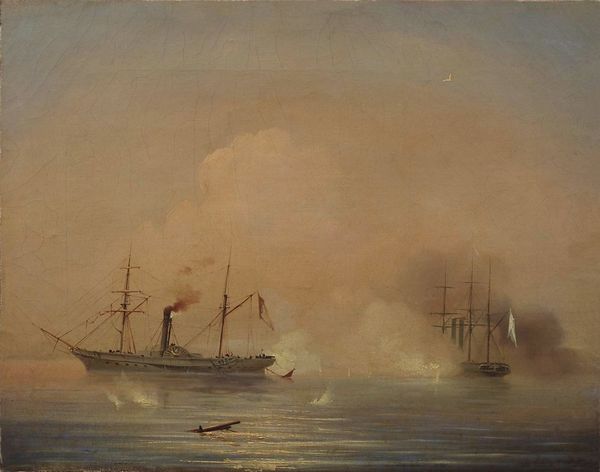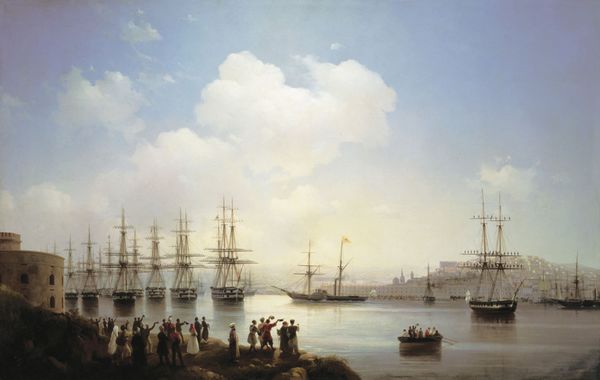
The Atlantic Telegraph Cable Fleet Assembled at Berehaven (Southwest Coast of Ireland): Ships, the Great Eastern, H.M.S. Terrible, the Alby, the Medway and the William Cory 1866
0:00
0:00
drawing, print, watercolor
#
drawing
#
water colours
#
ship
# print
#
landscape
#
watercolor
#
watercolour illustration
#
watercolor
#
realism
Dimensions: Sheet: 12 13/16 × 21 5/16 in. (32.6 × 54.2 cm)
Copyright: Public Domain
Editor: So, this watercolor print is by Robert Charles Dudley. It's called "The Atlantic Telegraph Cable Fleet Assembled at Berehaven," made in 1866. There's something melancholic about it, almost dreamlike with the muted colors and many ships. What do you see in this piece? Curator: This image, ostensibly about technological progress, speaks volumes about the intersection of industry, empire, and the natural world in the 19th century. Consider the title; it names the place and ships. But who gets elided? Whose labor powered these massive ships and the laying of this transatlantic cable? Editor: The laborers? Curator: Exactly. The image focuses on the fleet itself. Reflect on the notion of visibility and invisibility here. The ships represent technological triumph but were crewed by people, by labor that is almost intentionally erased in favor of the ships themselves. It makes you wonder about the power dynamics inherent in such portrayals of progress. Editor: So, it's not just about celebrating a technological achievement. It also raises questions about who benefited and who was exploited. Curator: Precisely. How are colonial narratives constructed here through technology? Think about whose voices get amplified through this cable. Editor: It connects Europe and North America, mainly... Curator: …reinforcing existing power structures and communication flows, largely sidelining other global communities. Dudley's artistic choice, while seemingly straightforward, serves to reinforce existing hierarchies of power, of access. Editor: That gives me a completely new way of looking at it. Thanks! Curator: Indeed. We can learn so much by simply re-framing our perception to reflect intersectional social values.
Comments
No comments
Be the first to comment and join the conversation on the ultimate creative platform.

